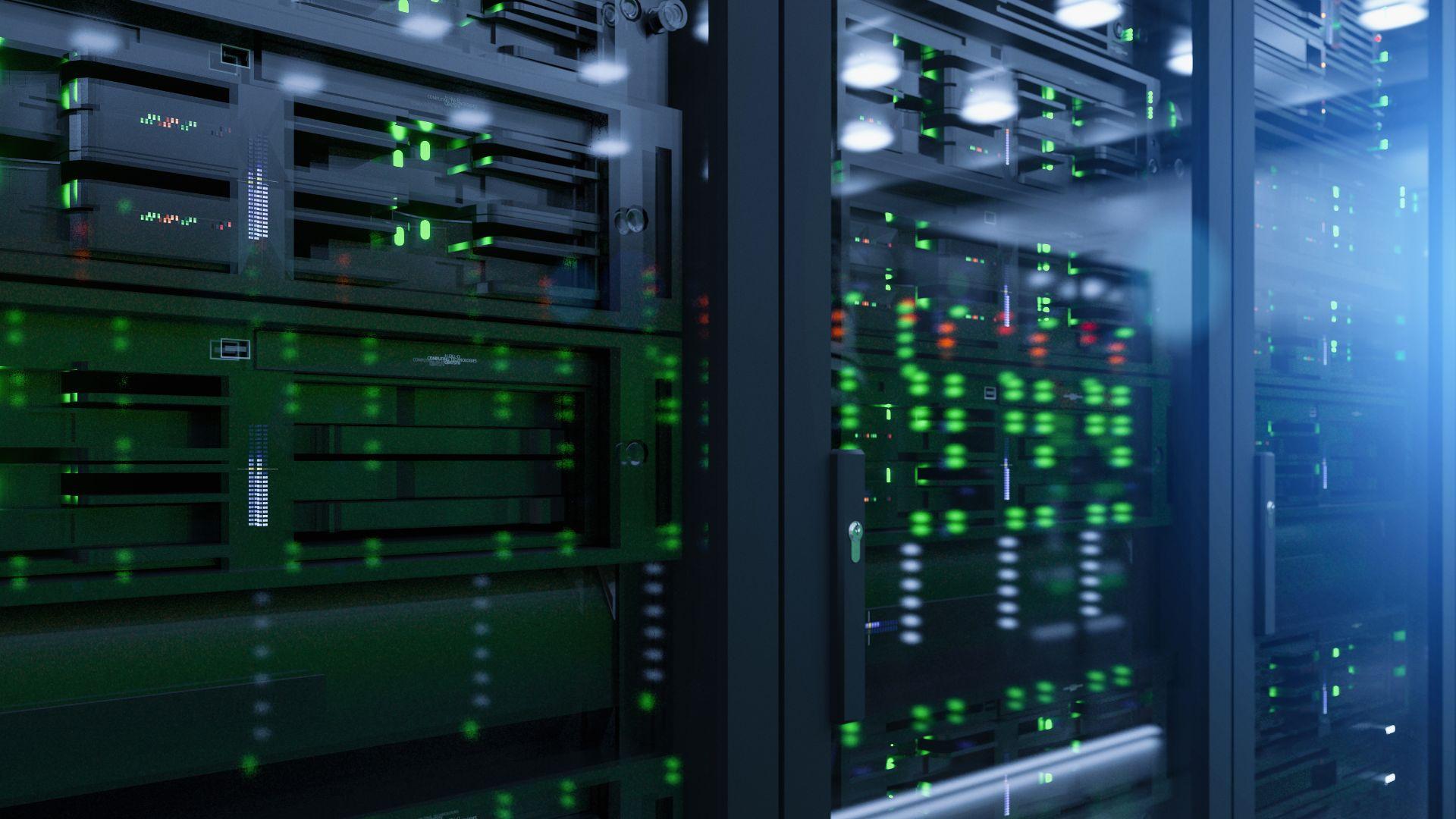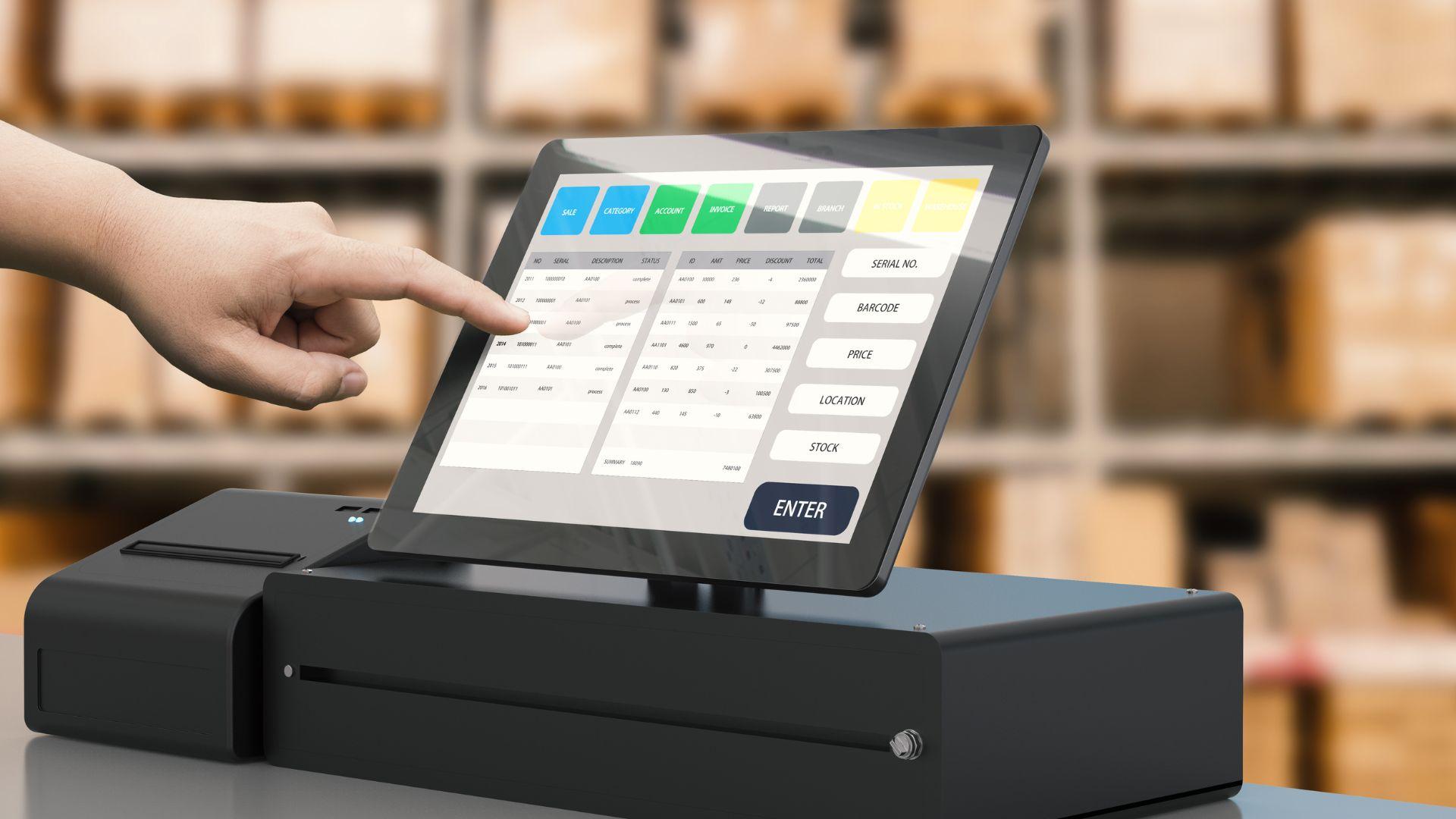Migration & Modernization of Legacy Applications: The 7 Steps Guide + Checklist
Migrating old and familiar applications can seem like a daunting task that many businesses would like to avoid. Some individuals may believe that using outdated software is safe and efficient, particularly if it has yielded positive outcomes in the past.
While it may be challenging to migrate a large volume of software, code, data, or even hardware, it is important to modernize IT systems and not persist with outdated applications and software programs.
Failing to keep up with modern technology solutions can hinder your innovation, growth, or even pose serious threats to your company’s efficiency, security, and ability to stay in business.
Popular reasons for considering a migration of legacy applications are:
- End of support – older technologies lead to a loss of compatibility, security patches, and developer availability.
- Compliance issues – companies in regulated industries must keep their systems updated to maintain their license.
- Maintainability issues – can become a limiting factor for your entire system chain, resulting in the inability to migrate to the cloud or integrate with new hardware systems.
- High expenses – legacy systems can become expensive due to limited options, high hosting costs, and limited developer availability.
- Scalability and performance – legacy systems can limit business growth by causing technical bottlenecks, a lack of scalability and ongoing performance issues.
Migrating legacy applications to modern software, platforms, and scalable cloud environments with ongoing support presents businesses with a significant opportunity to serve their customers better.
If you are unsure whether migrating your legacy applications to the latest technology is necessary for your business, or if you are not fully aware of how this process works and what benefits it can bring, our team of experts is here to help. We offer a free evaluation of your current setup and can provide guidance on the best course of action for your business.
Upon reading this article, you will gain an understanding of the difficulties and pitfalls to avoid. We’ll also delve into the different methods of legacy systems modernization and the seven steps to follow.
Why Are We Qualified to Provide Advice on Migrating Legacy Applications?
Euvic US is the New Jersey-based office of our global software development group. Over the last 18 years, we have executed hundreds of modernization projects successfully. Furthermore:
- Euvic has over 100 dedicated and managed teams, each specializing in different technologies and industries, such as Finance, Retail, and Manufacturing.
- Our teams consist of over 5000 people who constantly exchange ideas, information, and best practices. This sets us apart as a service provider capable of keeping up with the constantly evolving technology landscape.
- Our teams are scalable, which means we can offer flexibility as needed. Just like a scalable cloud-hosting environment, our teams can organize themselves to handle larger and more comprehensive projects, ensuring fast execution.
Discover Poland as one of the leading global destinations for high-quality software development services at competitive rates and check out our latest modernization case studies.
End-to-End Services: Lower Your Cost & Get Better Results
+5000 Polish software developers and IT experts are ready to level up your business
Why Should Your Business Consider Legacy Application Migration?
Did you know that the market for cloud migration services is expected to be worth $7.09 billion by 2024? It’s high time you considered legacy application migration a vital part of your IT modernization strategy. Here are a few reasons why:
To Remain Up-to-Date with the Latest Security Features, Compliance, and Regulatory Standards, Especially for Regulated Industries
Outdated applications pose a significant risk to businesses, leaving them vulnerable to data breaches, violating industry regulations, and becoming easy targets for cyber-attacks. It’s a potential liability that could have severe consequences for your organization.
A survey revealed that 74% of organizations experienced a breach due to unsecured third parties gaining access to their systems. The good news is that you can enhance your business’s defense against cyber threats by upgrading to a modern and secure platform, aligning your IT infrastructure with the latest security features and standards, and staying compliant with current industry regulations.
Not only does it reduce the chances of a data breach, but it also saves your business from potential financial losses, legal ramifications, and reputational damage.
In industries such as finance, technology, and the public sector, regulations are getting more stringent for managing sensitive data. Hence, it has become crucial to modernize and optimize the maintenance of your technology stack, data, and systems for highly sensitive applications.
To Reduce and Minimize Your Operating and Maintenance Costs
Did you know that US firms lose up to $1.8 trillion every year due to misused productivity caused by outdated technology?
An employee of a company using legacy systems wastes approximately 46 minutes of their day on average. This accounts for an annual loss of $3,500 per team member.
In addition to increasing employee downtime, applications quickly approaching end-of-life status and old-fashioned software incompatible with new systems have an unreasonable maintenance cost. They perform poorly, have time-consuming update routines, or may even lack available updates. The cost of correcting problems may ultimately get out of hand.
Upgrading an older platform to a newer one will improve efficiency and performance, and reduce the resources needed to maintain the applications. By taking advantage of new technologies, your company can significantly reduce the costs associated with operations, maintenance, and support.
To Become More Agile in the Ever-Changing Digital Landscape
According to a 2022 report, the growth of almost 90% of businesses is hindered by legacy technologies. Case in point, data-native workers lose 800 hours annually because 61% of data activities still happen in inefficient legacy spreadsheets.
In today’s digital-first world, companies cannot achieve the scale and speed necessary to work efficiently and provide data-driven insights without shedding their legacy applications
Adopting modern technologies is the only way for businesses to become more agile and better prepared to meet the demands of a constantly changing marketplace. By up-leveling the tools data workers are given, companies will be better equipped to adjust quickly to evolving customer expectations and take advantage of new business opportunities.
To Gain or Retain a Competitive Edge
Outdated technology can hinder productivity, stifle innovation, and limit scalability, thereby putting your business at a disadvantage. On the other hand, migrating your legacy applications to a modern, technology-driven platform can provide your business with a significant competitive edge.
By upgrading to a modern technology stack, you can significantly improve productivity, streamline workflows, and enhance collaboration across your organization. Modern systems provide the agility and scalability necessary to respond quickly to evolving market demands and capitalize on emerging opportunities.
An example of this can be seen in a recent study which discovered that 89% of Americans are concerned about the security of their data. As data security becomes an increasingly pressing concern for consumers, upgrading to a secure and up-to-date tech stack can give your business a competitive advantage by instilling confidence in your customers that their data is in good hands.
Available Options and Methods for Modernizing Legacy Applications
Once the problems are identified and the objectives are laid down clearly, it’s time to choose and/or combine the suitable methods and options for modernizing. Gartner has presented multiple options and definitions.
Our inhouse expert team has provided additional background information for each of them, so you can get a practical and hands-on understanding and overview.
Rehosting: Preparation of the Migration, for Example, from On-Premise to Cloud Environment or Change of Provider
Reasons for rehosting:
- A common use case is the migration from on-premise to the cloud because you have an unscalable old infrastructure impacting performance, and investing in hardware upgrades no longer makes sense. This can limit your efficiency and overall growth.
- Even for solutions that run on the cloud already, sudden changes of their billing structure might affect you. An example case could be the need for a migration from Microsoft Azure to Amazon AWS.
Use cases and examples:
- Our team has recently performed a rehosting project from on-premise Microsoft BizTalk to Microsoft Azure, increasing performance, improving error-solving, and adding multiple benefits.
Replatforming: Rewriting and Editing Software for the New Framework
Reasons for re-platforming:
- A typical scenario for replatforming is the need to migrate an existing application to another framework in order to improve performance, stability, and security.
- Another reason for an urgent replatforming project would be the end of support by the provider.
- Specific use cases could be the need to migrate from clipper to .NET framework or migrating an old database engine that is no longer supported to the latest SQL server option.
- Depending on the legacy system, it might be near impossible to find developers who are equipped with the specific set of knowledge needed.
Use cases and examples:
- Our client case of the Swedbank migration from VB6 to latest .NET framework.
Refactoring: Optimization of The Software and IT Environment for Performance and Stability
Reasons for refactoring:
- IT modernization doesn’t always imply the need for totally new software, framework, or hosting. Sometimes, it’s possible to achieve quick wins through optimizing your current system. Refactoring means optimizing your software and systems to improve performance, stability, and security.
- Especially when systems are developed on the go without enough effort into quality or simply because the developers in charge do not have the required capabilities, it can happen that the system has poor performance, security issues such as undiscovered SQL injection vulnerabilities, or simple bugs that can harm your business.
- As a result, you’re left out running a system that is failing to serve you in the way you need it. Specifically, the missed creation of indexes on the database side, as well as a lack of logging and monitoring, are reasons we see being an issue frequently
Use cases and examples:
- Refactoring projects offer the opportunity to achieve quick wins short or mid-term. The crucial part is having A-tier senior developers review the code and database. This is inevitable and the only option how to spot weaknesses right away. Our expert teams are specifically trained on this procedure. Our engineers start out executing a technical due diligence and then take over the optimization process hands-on.
Rearchitecting – Preparing Your Data, Software, and IT Systems for a New Environment.
Reasons for rearchitecting:
- As the name suggests, this method involves a much broader type of modernization. A shift in architecture means a change in your entire application and tech landscape and requires taking a step back to see the bigger picture. This is typically a much bigger shift than refactoring or rehosting since it affects your entire IT environment.
- For companies that see a rapid growth of their users or queries overall, other methods might not be sufficient to meet the criteria. In that case, a full rearchitecture of your system is needed to prepare for a shift towards new technologies that are highly scalable and future-proof—popular demand in startups but also larger enterprises.
Use cases and examples:
- We’ve executed an Integration based on BizTalk and then rearchitected it based on cloud-native Azure services for higher performance, scalability, stability, and security.
Replacing, Repurchasing, Retiring – Replacing Software with New or Off-The-Shelf or Custom Solutions, Retiring Old Systems
Reasons for replacing, repurchasing, and retiring:
- We’ve combined these terms into one method, because it’s usually interconnected to each other. All methods share the removal of applications from your legacy system.
- Once we’ve identified the need to remove your outdated systems because migrating to an off-the-shelf solution is more cost-effective, we map out the replacement and retirement. This step makes sense especially when development costs are greater than purchasing a new system that fits your needs and is easier to customize.
Use cases and examples:
- Common use cases for replacing and repurchasing are: Moving from a custom ERP system to SAP or shifting from a custom HR solution to an off-the-shelf HR software.
- A more comprehensive example of retiring a legacy system is moving an online store offering digital music downloads to a streaming service platform. Retiring would include not only the removal of the store but also the migration of the user base to the new service.
Do You Choose One Modernization Method and Strategy Only?
To finish off this introduction of migration methods, it’s important to understand that legacy application modernization and migrating projects are usually very agile during execution.
Throughout the process, we are open to adapting to new learnings and insights; we analyze for opportunities and don’t blindly execute the plan.
We can limit ourselves to only one of the modernization methods mentioned for very simple and specific projects.
See Our Latest Client Case Studies
Check out our portfolio of client success stories
Migration of Legacy Applications Explained: The 7 Steps Guide
We have combined our perspective as a specialized software development company with your view as a business owner to lay down 7 steps for a successful migration project.
Step # 1: Analysis of Your Long-Term Business Objectives and Needs
- Before starting any project, it’s essential to take a step back and analyze your situation and long-term goals. We do this by conducting a workshop and understanding your needs thoroughly.
- Our experienced consultant will help you understand the possible outcomes and objectives beyond the project’s horizon. Our experience from hundreds of similar projects enables us to identify and mitigate potential pitfalls.
- We recommend conducting an objective SWOT analysis to evaluate the benefits and challenges that may arise during the migration exercise.
- Studying the strengths and weaknesses of your IT system will play a crucial role in planning not only the technical process but several other aspects of migration, such as security procedures, compliance factors, and external variables.
- Starting the migration process requires a thorough understanding of the new system’s needs and requirements. This includes analyzing the existing architecture, determining the scope of the migration, and planning for the necessary resources and budget.
- During the first stage, possible obstacles you may encounter with operational, financial, and staff training processes will be highlighted.
Step # 2: Thorough Assessment of Your Current Applications and Data
- Modernization often necessitates transferring data from one system to another. Therefore, the initial step is to analyze the preexisting technology stack and existing data since both need to be migrated separately.
- Sometimes, migration begins from an outdated technology, and the data needs to be separated manually. Euvic takes a deep dive into comprehending your existing system to ensure that we can provide the best options for manually extracting data or building an interface.
- When dealing with black-box applications that have hidden functionality, it is essential to focus on inputs, outputs, and system responses. In contrast, for transparent-functioning white-box systems, you can utilize reverse engineering to comprehend system functions and related data.
Step # 3: Selecting and Planning the Ideal Migration Strategy
- As mentioned above, there are multiple methods of migration: Rehosting, Replatforming, Refactoring, Rearchitecting, Repurchasing, Retiring & Replacing.
- It is crucial to plan the right strategy precisely, especially when working on active, live systems that need to be migrated or replaced quickly without downtime, errors, or delays.
- The right strategy will depend on various factors, such as your business needs and budget. That said, some methods can introduce difficulties and incur extra costs. Ensure that your app developers are proficient in working with modern technologies, particularly cloud applications, to prevent unintentional data loss.
Step # 4: Performing a Pilot Migration Project
- To mitigate the potential risks that may arise during migration, you should consider conducting a pilot test before proceeding with the actual process. Although this step may require additional time, it can help avoid costly errors and ensure a smoother transition.
- Depending on the complexity of the project, it might be sufficient to perform a partial test only, making sure the compatibility of your system works as planned, or prepare a full pilot project for highly challenging projects on live applications.
Step # 5: Executing the Legacy Applications and Data Migration
- After completing all the necessary preparations, you can proceed with migrating the legacy applications. It is important to make sure that you have safely backed up all your data before starting the process, as any data breaches can have a long-lasting impact on your business.
- Your trusted service provider will take over the process of migrating your data. As a client, it is your responsibility to ensure that you have provided all necessary systems and data.
- Failure to provide all the data required at this stage may result in complications during the migration process. To avoid this, you need to trust your service provider and make sure that you have communicated all the systems and data you need migrated, and provided any available documentation.
- Providing all the necessary information from the beginning is vital to the success of the migration process. Any missing data or documentation can cause significant problems later on, just like asking a company to repair your hardware without providing all the pieces.
Step #6: Entering the Testing Phase After Migration
- Testing the migrated system and data with the involvement of real users is a crucial step to ensure the long-term success of rolling out a live system.
- This testing involves integration testing, performance testing, and usability testing. End-to-end testing includes manual testing by real users.
- It can be a nightmare to encounter an issue while testing your system, only to realize that you forgot to migrate an important feature, perhaps from a hidden path or external software.
- Again, this problem could have been avoided if you had properly shared your entire IT infrastructure with your service provider. The further down in the process an error is recognized, the more difficult and expensive it becomes to fix it. Therefore, it is crucial to identify such errors from the very beginning in order to avoid missing any crucial points right from the start.
Step # 7: Maintenance after Migration and Ongoing Optimization
- After successfully migrating your legacy applications to a new system, it is crucial to monitor its performance regularly and optimize it as needed to ensure seamless operations.
- Once your new system is up and running, it’s essential not to revert to your old ways and habits to avoid the system getting outdated again. Maintaining a system is the best way to save costs.
- At Euvic, we believe that maintaining a system means securing its foundational functionalities. Our team goes beyond that and continues to optimize the system as your long-term partner.
Legacy Migration Failures and the Need for an External Partner
You may have come across instances where businesses experience financial losses due to interruptions and failures during the migration of their legacy applications.
Failures during legacy application migration are commonly caused by a lack of a proper strategy or when applications fail to restart in the cloud. Disruptions during the migration process can severely impact an organization’s efficiency, and endanger its stability, reputation, and ability to generate profits.
This is why it is recommended to partner with a software company specializing in modernization and software development. These experts should have an in-depth knowledge of cloud technologies and a successful track record of helping companies bring their migration vision to fruition without technical issues.
An ideal external partner for migrating legacy applications should possess the expertise to develop a comprehensive technical plan for updating outdated applications and software platforms, as well as efficiently transforming your IT system.
We’re The Partner for Your Legacy Application Migration Needs
We’ve uncovered your advantage: Polish A-player talent and local leaders, building the perfect bridge and symbiosis to serve you best.
It shouldn’t surprise you that we’re working with some of the biggest, most prestigious companies worldwide, trusting us with their challenging projects. Euvic has recently been listed as one of the best Polish IT providers by the Polish Embassy in the US.
And we know how to solve the problems – so you get the results you need and the competitive advantages you want. Learn more about legacy system modernization service.
Speak to our experts and get an initial evaluation and estimate for your project.
Talk to Your Local Euvic Team
We respond within 24h. Get Your Project Cost Estimate & Consultation





